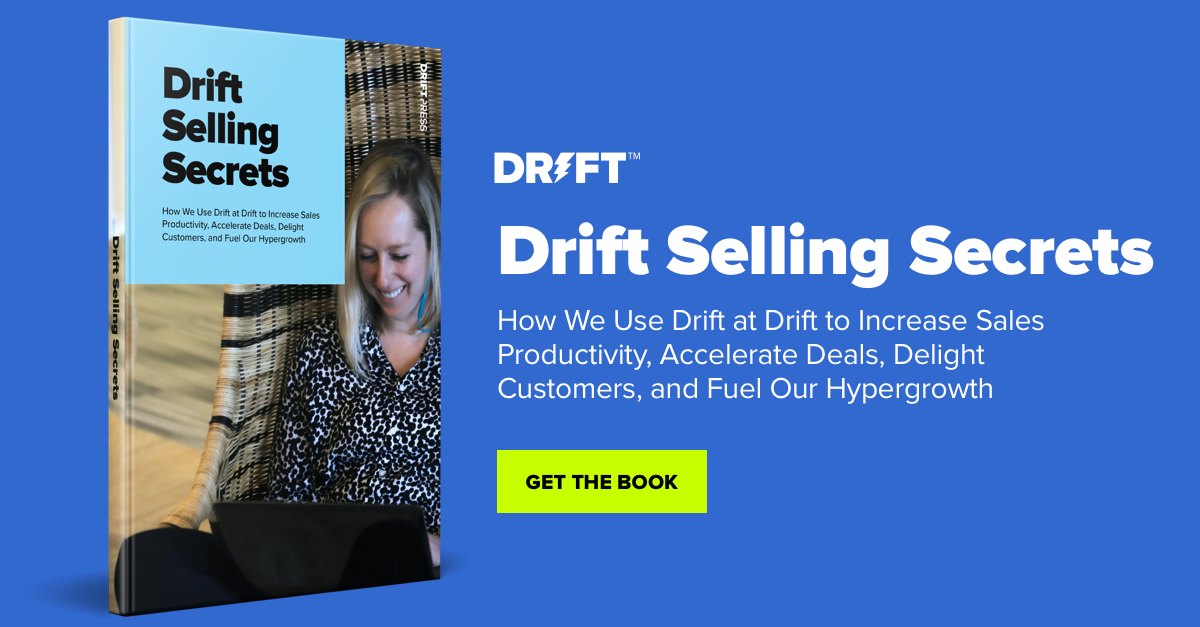How easy is it for your customers to buy from you?
Sales teams are tuned into pipeline, win rate, and sales-qualified leads. But they’re missing the most important part of the modern sales process: conversations.
We no longer live in a world where companies are the gatekeepers of product information, or where sales teams get to decide how (or when) potential customers get to talk to reps.
With the rise of real-time messaging and the on-demand economy, buyers have come to expect a new type of sales experience — one where their voices are heard and where conversations happen on their terms.
Over the past decade, we’ve become so obsessed with leads that we’ve simply doubled down on what we know. But today’s B2B buyers expect companies to roll out the red carpet. And sellers need the tools, data, and support to act as their personal shopper.
It’s surprising how many sales teams haven’t adapted to this reality…which is probably why so many reps spend hours making calls with nothing to show for it 🤷♀️
If your sales team is starting to feel the strain of sorting through bad leads, we feel your pain. The good news is there’s a new approach that’s perfectly suited to the real-time, on-demand world we live in now: Conversational Sales.
What Does Conversational Sales Look Like?
For years, sales and marketing teams have used the “form and follow-up” approach to capturing and qualifying leads.
We’re all familiar with how this works:
- Drive people to your website (via content, social, paid ads, outbound email, etc.).
- Make those people fill out lead capture forms.
- Email them, call them, or dump them into an automated “nurturing” flow.
But if you’ve managed to catch someone’s attention — especially an ideal client — why would you waste their time by asking them to fill out a form?
The people who visit your website are there for a reason. Maybe they’re interested in learning about a particular subject or looking to solve a problem. They’re ready to talk to you.
Imagine showing up to a car dealership, test driving a car, and having the salesperson say, “Fill out this form and we’ll call you later.” Frustrating, right? That’s exactly what you’re making your prospects do. You’re investing all this time and energy getting leads to your site, but as soon as they get there, you put up a barrier.
With Conversational Sales, you tear down these barriers and give your best leads a direct, real-time connection to your sales team. Buyers have the power to reach out when it’s convenient for them, and — with the help of intelligent chatbots — you can answer their questions and schedule demos 24/7/365.
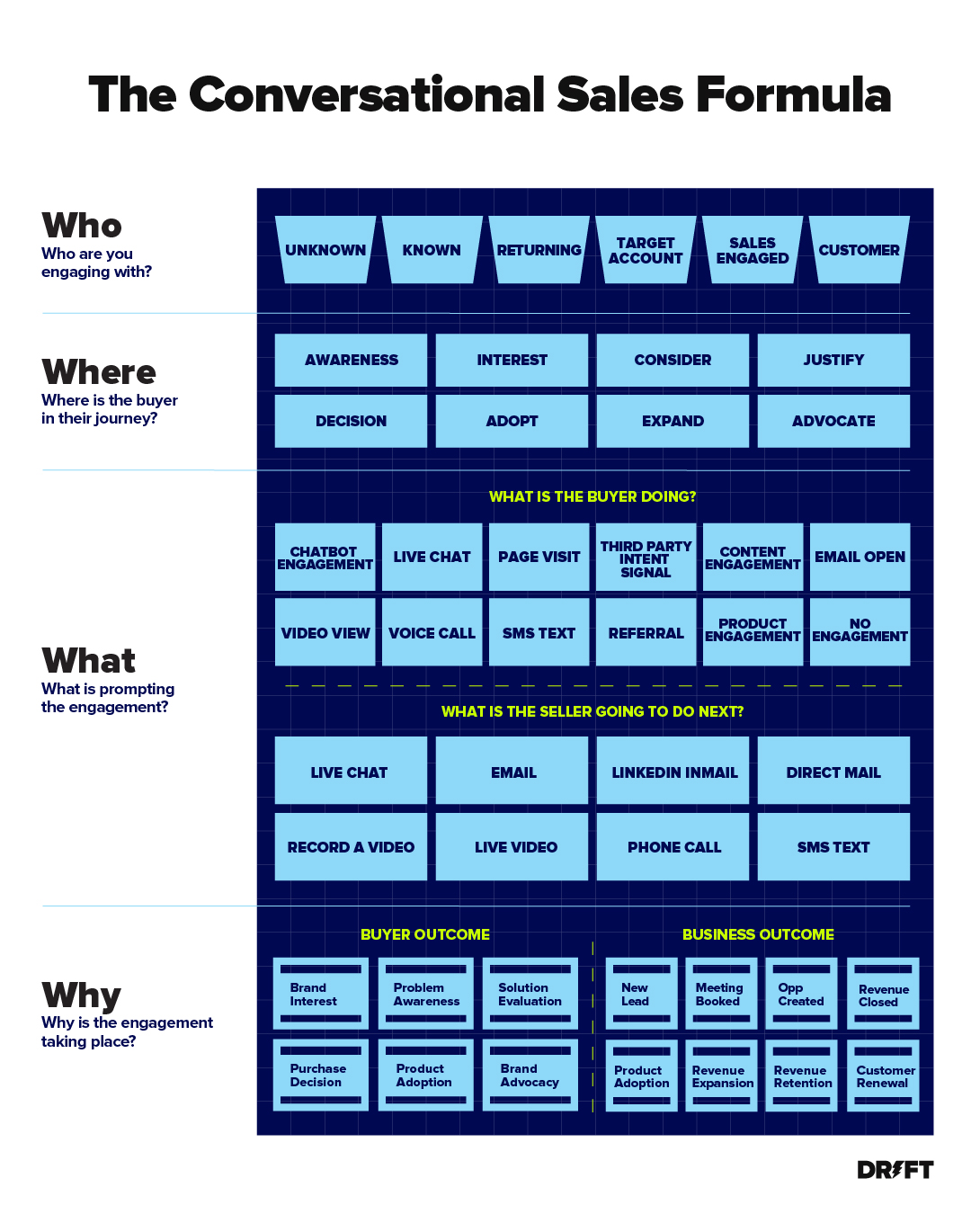
To help you streamline your sales process, we developed the Conversational Sales Formula. It homes in on four questions: who, where, what, and why.
- Who is the buyer? Are they a stranger you know nothing about, a decision-maker from one of your target accounts, or an existing customer?
- Where are they in the buying journey? Is this the first time they have thought about a challenge? Or are they down to their final shortlist of solutions?
- What are they doing? What is the problem they’re trying to solve? What actions have they taken? How will that affect your response?
- Why are they engaging with you? What outcome does your buyer want? Why did they contact you, and how can you best serve them?
Using this formula, you can speed up the sales cycle and increase your sales pipeline. Don’t just take our word for it though. For Gong, the switch to Conversational Sales helped influence more than $9 million in pipeline.
Conversational Sales, combined with Conversational Marketing, delivers a real-time personalized experience that accelerates all your deals. Together, they will help you provide a unified customer experience and grow your revenue.
Conversational Sales is the fastest way to build trust and credibility with buyers to turn them into customers. It accelerates your sales process by connecting you with buyers at the right time. Get certified today.
Grow Your Inbound Pipeline with Conversational Sales
With the rise of search engines and social media came inbound sales — a strategy to attract potential buyers to your website and start them along the buyer’s journey. On this journey, a buyer typically goes through an awareness stage (“I have a problem”), a consideration stage (“This looks promising”), and finally, a decision stage (“This is the solution I want”).
As an inbound sales team, your job is to educate potential buyers and make sure they have all the information they need to make an informed decision. Many of today’s inbound sales development reps (SDRs) live by the motto, “Helping is the new selling.”
But that’s easier said than done. Today’s B2B customers actually complete 70% of their buying journey before talking to sales. If you want to make the sale, you have to deliver compelling, personalized experiences for your buyers when their intent is highest.
For inbound prospecting, Conversational Sales is all about being in the right place at the right time when ideal customers arrive on your website. Here’s how it works:
Step 1: Engage Website Visitors Using Chat
For inbound SDRs, Conversational Selling starts with a strong chat strategy.
One of the main ways of achieving this is through personalized conversations when the buyer is on your site.
Personalization is the key to a memorable buying experience. To truly engage prospective buyers, you need to deliver a fast and memorable chat experience — one that acknowledges who the buyer is and what they are interested in. Most importantly, you want to do so when your prospect is actively showing interest, i.e. when they’re on your website.
So how do you start conversations or pick up a conversation routed to you? With live chat.
Live chat is where you can see conversations that have been started on your website. These conversations are handled by you, the bot, and even AI (Drift Automation). Most Drift users spend the majority of their time in live chat.
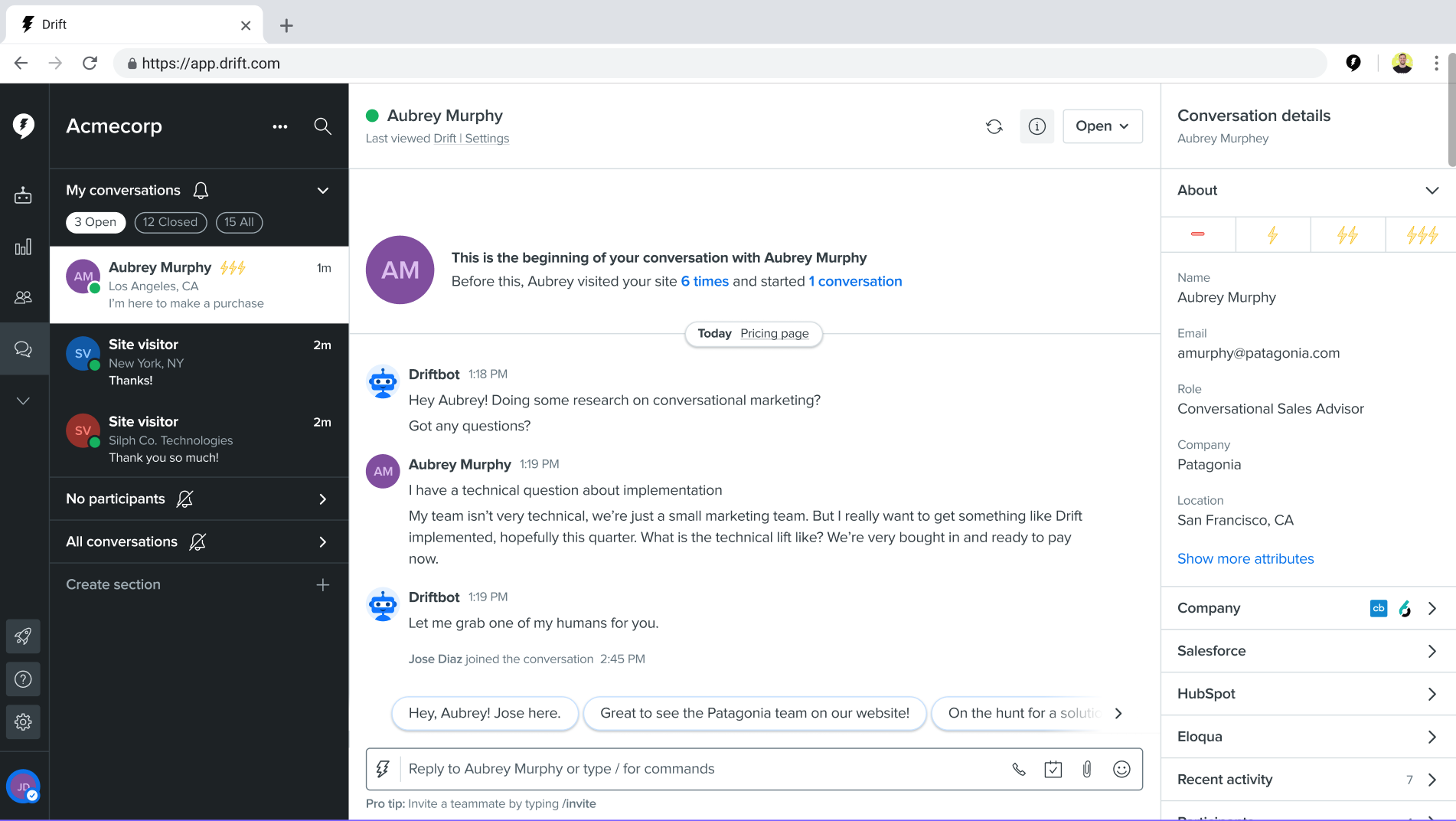
“Live chat lives in the background all day while I’m working. I couldn’t imagine my day without it. Real-time notifications and chat give you a way to engage with your buyers when their intent is at its highest.”
With chat, inbound SDRs will find it easier to meaningfully engage with buyers and successfully start them off on their buying journey. All it takes is one conversation.
Step 2: Cater to Buyers in Real-Time
It’s impossible for your sales reps to hold real-time conversations with every new lead. After all, we humans need to sleep. Plus, not everyone who clicks “Contact Sales” is actually a good fit for your product. Enter: chatbots.
Chatbots ensure that only the best leads get to sales. They can filter out buyers who aren’t qualified or are at the beginning of their buying journey while answering basic questions and providing educational material. And, for those conversations that require a human touch, bots can use intelligent routing to make sure that buyers are automatically connected to the right reps.
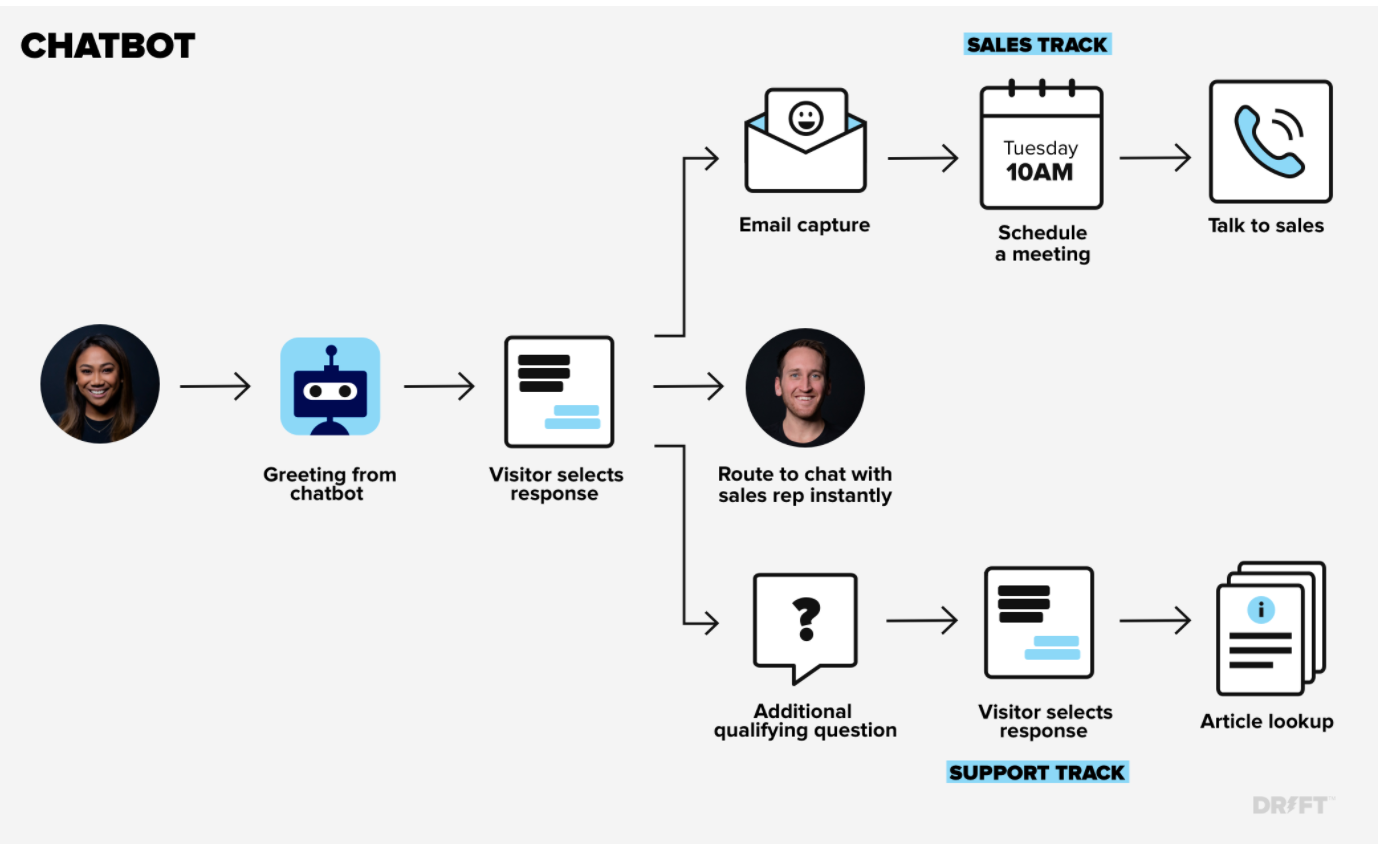
Conversational Sales removes the challenge of immediately connecting with your target buyers. Now, you can engage with them where they want and when they want — without having to massively scale your sales team or place impossible demands on your SDRs.
With the help of chatbots, your team will be working smarter, not harder, and then you’ll be seeing results in no time.
Step 3: Book Meetings and Follow Up (Even When You’re Not Online)
In the traditional approach to inbound sales, scheduling demos with buyers often involved a lot of phone tag and long email chains. It was a huge drain on sales productivity.
Thanks to live chat and chatbots, sales reps no longer have to deal with such tedious tasks. And, on the other side, buyers don’t have to wade through dozens of emails and phone calls. They can book demos with just a few clicks.
As soon as the buyer is ready for a demo, the chatbot will drop the sales rep’s calendar into the chat window. Then, all the buyer has to do is pick a meeting time that works best for them. All of this happens automatically, so no wait times or back-and-forth required.
What’s even better is that, when you’re booking a meeting, it’s just one part of your conversation with the buyer. Whether it’s your chatbot or an SDR on the other end, that chat log is a valuable tool to make your buyer’s meeting with their reps as productive as possible.
“There are many outcomes that a conversation can result in. The most ideal result for any SDR is booking a meeting. If I do book a meeting, I’ll pass the conversation link right over to my account executive and send the whole chat transcript.”
Drift also makes it easy to send follow-up messages, whether it’s through chat, email, or video. Sales reps can send meeting recaps as well as additional resources so that the buyer continues to make their way along the buying journey.
Want to learn more? Take our free course on how to use the Drift Sales Seat for inbound reps.
Add a Personal Touch to Your Outbound and Account-Based Outreach with Conversational Sales
Conversational Sales gives you the power to flip the traditional outbound model on its head. It’s no longer spray and pray. Instead, it’s designed to win over specific, high-priority accounts that are the best fit for your solution.
When someone from a target account lands on your website, you want to treat them as a VIP. But most businesses give their VIPs the same experience as any other visitor and miss out on that “wow” factor.
B2B sales teams use account-based selling to focus on their top accounts, while staying open to new, quality prospects. It’s a balance between giving your top-tier accounts extra attention and putting enough muscle behind your one-to-many campaigns.
Here’s how:
Step 1: Set Up Personalized Welcome Messages for Target Accounts
Which is better: a generic “Hello! How can I help you?” or a message that calls out your target account by name and jumps straight into what your solution can do for them?
For a true VIP experience, you want to send personalized messages from the get-go. Even if it’s someone you’ve never met before, you can incorporate their company name in your welcome message. Personalizing your messaging starts in Drift Prospector.
“Drift Prospector helps me daily because I’m able to understand which of my accounts are landing on the website, which pages they are reading, and what content they are consuming.”
Drift Prospector gives account executives (AEs) insight into their account’s interests and pain points, which can then be used to customize outreach. It also helps you understand the buying committee, so you can decide who to reach out to first.
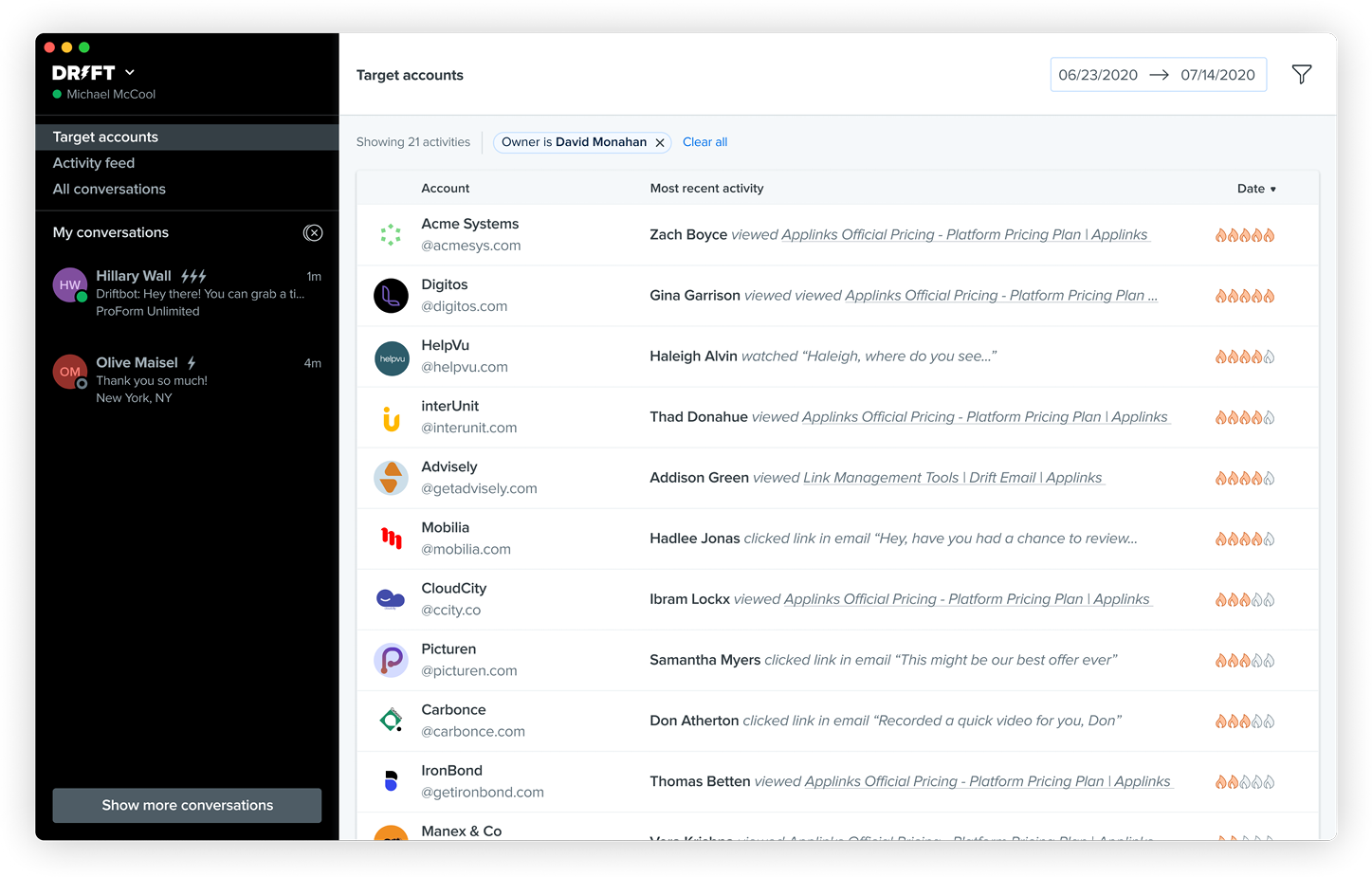
Instead of delivering the same old website experience, Conversational Sales allows you to roll out the red carpet for your target accounts. With personalized messaging all throughout the buying process, you’ll see more and more people willing to jump into the conversation with you.
Step 2: Connect Outbound Email and Video to Real-Time Messaging
A big part of outbound prospecting is reaching out to prospects who aren’t on your website. But that doesn’t mean you have to take a shot in the dark. Using Drift Email and Drift Video, you can transform those static conversations into dynamic ones.
With Drift Email, you can include links in your messages that trigger real-time messaging — so if a prospect opens an email and wants to immediately have a conversation, that conversation is one click away.
And to make the transition from email to real-time messaging as seamless as possible, we make sure the rep who sent the email is the same rep who appears in the messaging window. Even if the rep who sent the email isn’t available, our chatbots will help keep the conversation going.
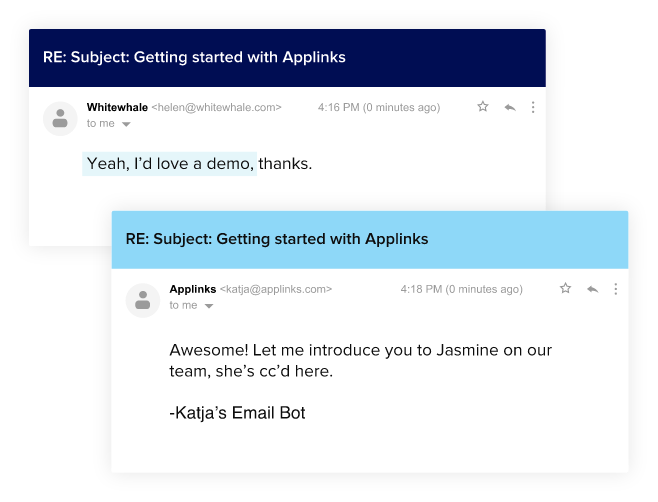
Drift Video allows you to further personalize your outbound messaging by turning your AEs from faceless strangers into friendly faces.
“I initially send Drift Videos through LinkedIn to connect with different people on the buying committee so that they can put a face to the name. It’s a really light touch to say, “Hey! I’m Sara. If there is anything you need as we’re going through this process, feel free to reach out.”
And, just as with email, Drift Video gives your target accounts the opportunity to start a conversation with you without leaving the page. Your buyers can ask questions or book meetings right then and there.

Both email and video are static. But by connecting them to a live channel, you can make sure that your conversations with your target accounts don’t get buried in your inbox (or theirs).
Step 3: Real-Time Notifications Mean You Never Miss an Opportunity
No more missing out on conversations when your buyers are ready to have them.
If your prospect opens an email, watches a video, or lands on your website, Drift will send you a real-time notification so that you can catch high-priority accounts when they want to talk to you.
“I especially love jumping in when a target account is watching a Drift Video I sent them. But even if I’m offline, the bot will let the buyer book time on my calendar for a future chat.”
When a sales rep sees these notifications, they’ll have the opportunity to reach out and engage with their prospects, even if it’s a simple: “Hi there! Need any help?”
From a buyer’s perspective, it’s like having a personal shopper at their beck and call. If a question arises, they know there’s someone around to help them. It’s real-time notifications that make it possible for you to truly deliver the VIP sales experience to your target accounts.
Want to learn more? Take our free course on how to use Drift Sales Seat for outbound reps.
CQLs & Other Conversational Sales Performance Metrics
Now that you have a basic understanding of how Conversational Sales works, it’s time to explore how to measure your performance. Here are a few things you’ll want to look at:
- Conversations: As you’ve seen all throughout, Conversational Sales is all about starting conversations. They are the fuel that drives your business. That’s why you’ll want to keep an eye on this number on a weekly and monthly basis. You can find this metric at the top of your Drift Dashboard, in the Overview section.
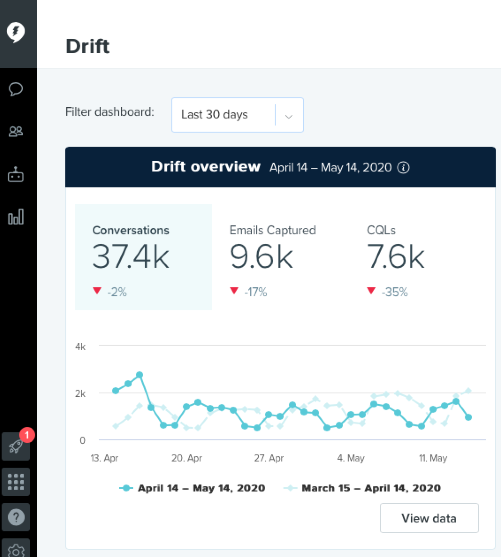
- Emails Captured: How do you measure lead generation when you’re not using forms? One of the best indicators to replace form completion is emails captured because most chatbots will ask for an email address to get in touch with new prospects. This number can also be found at the top of your Drift Dashboard, in the Overview section.
- Conversation Qualified Leads (CQLs): You’ve heard of marketing qualified leads (MQLs) and sales qualified leads (SQLs)…now get ready for conversational qualified leads. CQLs means anyone who has expressed buyer intent in a conversation with a sales rep or chatbot. Sales reps can mark someone as a CQL manually, but you can also allow your bots to mark qualified visitors as a CQL automatically. This number can also be found at the top of your Drift Dashboard, in the Overview section.
- Meetings Booked: What’s the goal of all your conversations? Getting a meeting booked. To assess your success with Conversational Sales, you can measure the cumulative number of meetings booked within a timeframe. In Drift’s Meetings report, you can also find the top five sales reps in terms of meetings booked.
You can track all of these conversational metrics and more directly within Drift. To learn more, take a look at the reporting section of our Revenue Acceleration Guide for marketing.
- Opportunities: This means potential future sales. This isn’t just about finding someone who’s a good fit for your product — we’re talking about a real revenue opportunity. If you have the Salesforce + Drift integration, you can find this in the Sales Results section.
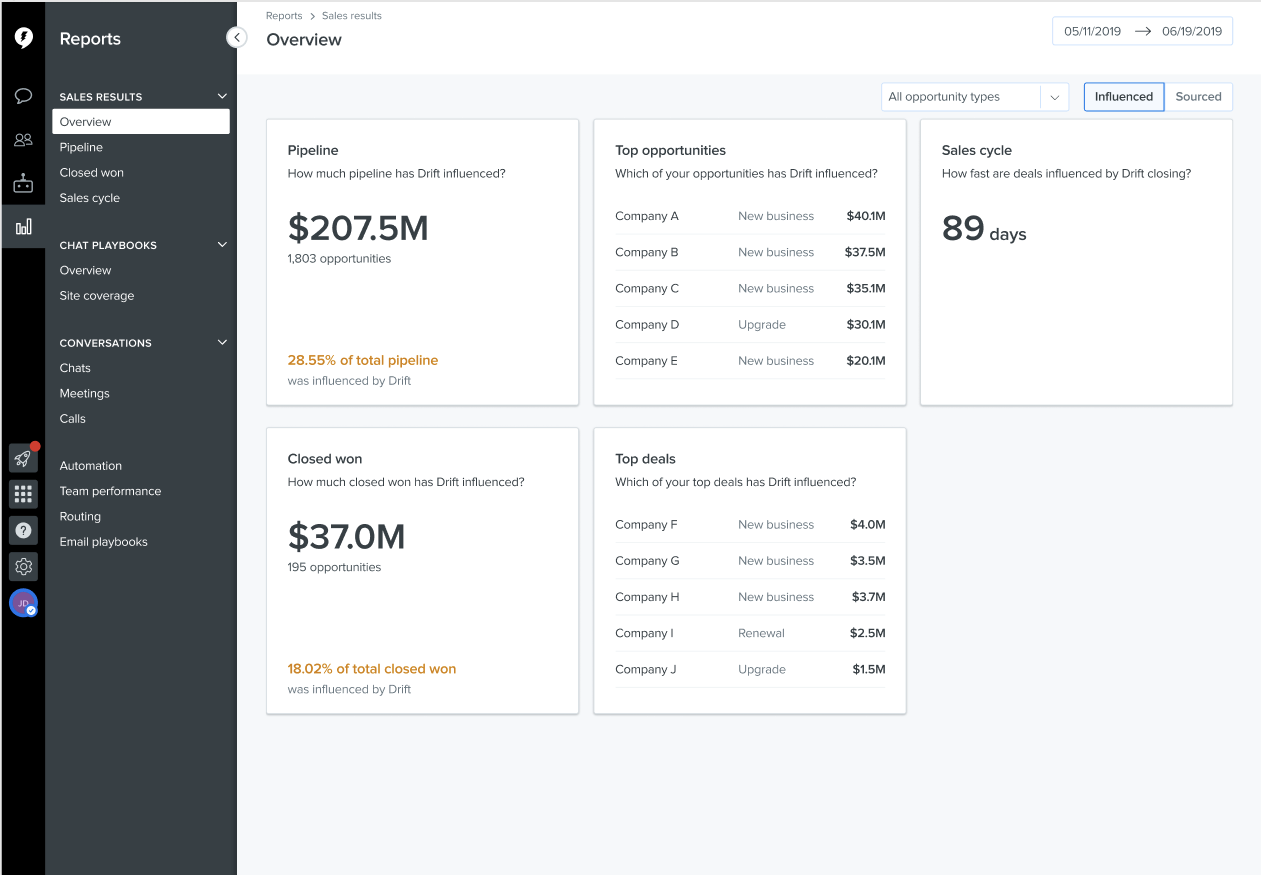
- Pipeline: This refers to the total dollar amount associated with opportunities that were sourced from conversations. If you have the Salesforce + Drift integration, you can find this in the Sales Results section.
- Closed Won: How many of your opportunities turned into actual deals? That’s the question “closed won” answers. This refers to the total dollar amount associated with opportunities sourced from conversations that closed into customers. If you have the Salesforce + Drift integration, you can find this in the Sales Results section.
- Sales Cycle: How quickly are you closing deals? The sales cycle report shows the average number of days it takes for you to go from opportunity created to closed won. If you have the Salesforce + Drift integration, you can find this in the Sales Results section.
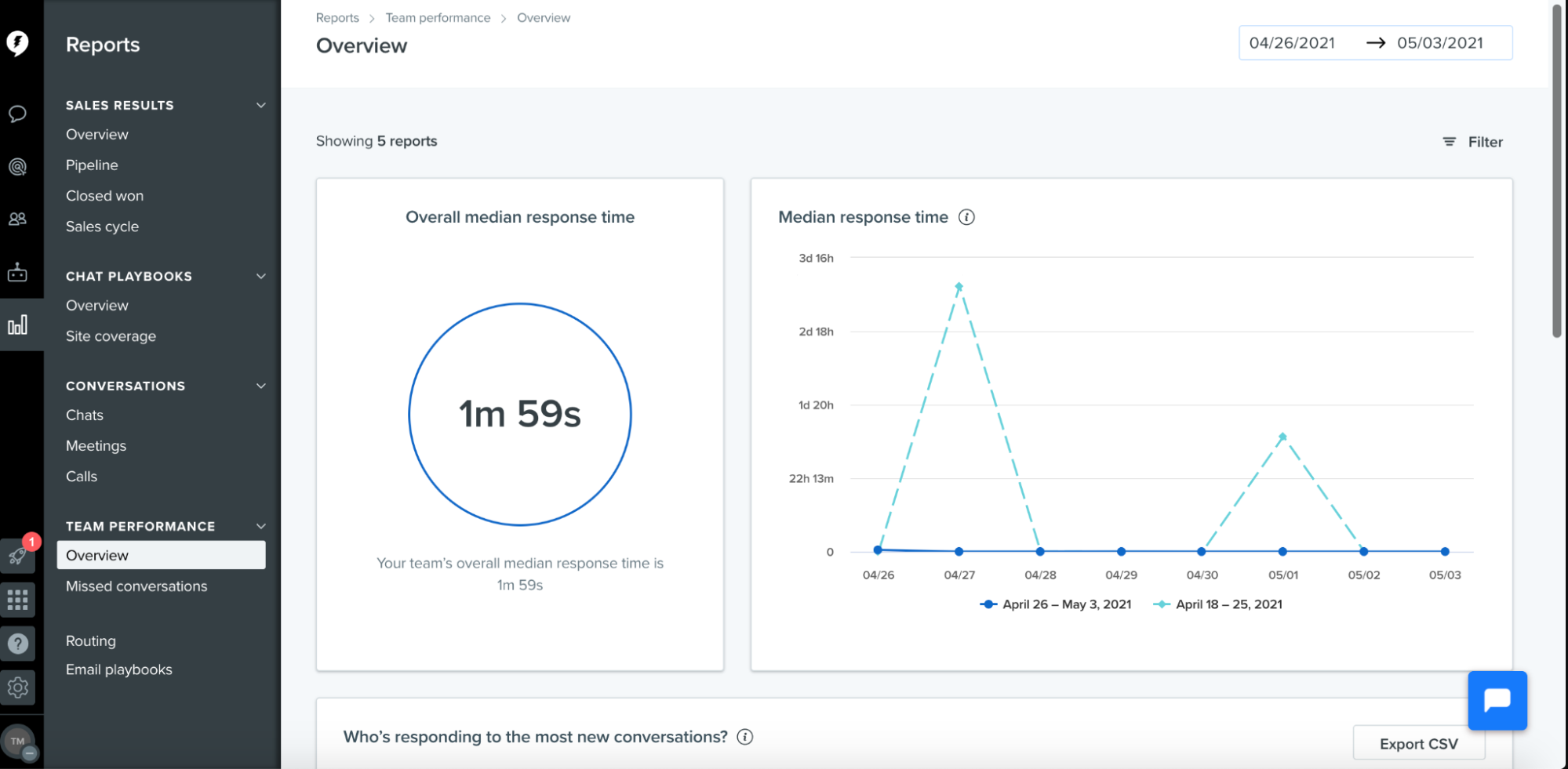
- Team Performance: A big part of measuring the success of Conversational Sales is knowing how well your team is performing. The team performance report provides an overview of your sales reps’ performance, including metrics like median response time. You can find the overview under the Team Performance section.
You can track every element of Conversational Sales directly within Drift. If you want to learn more about Drift’s sales metrics, take a look at the reporting section of our Revenue Acceleration Guide for sales.
Adopting a Conversational Approach to Sales
The sales landscape is shifting. But we’re here to help you adapt.
Because here’s the thing: Your customers want you to switch to a Conversational Selling approach.
And it’s completely possible. You can easily integrate a Conversational Sales platform like Drift with other tools you’re already using, like Salesforce, Marketo, and more. You don’t even have to get rid of forms altogether. Simply use real-time conversations as a second net — a new channel to source new buyers.
Don’t think of it as a giant leap of faith. There’s no need to overhaul your website or disrupt the entire sales process. When you first get into Conversational Sales, start small. Even one SDR using Drift can make a huge difference.
Once you take that first step forward, you’ll see just how much Conversational Sales can help your teams close more deals, faster. Just take it from one of our customers:
“I noticed I had an account that kept hitting up the website, and they kept looking at a use case we weren’t actually targeting them for. Drift put it on my radar and so I went ahead and did my due diligence on LinkedIn Navigator, got them in an outbound cadence, and within an hour I received an email back asking to schedule a meeting. From our initial conversation to signed contracts, it took only 27 days for us to close this deal that would have never been on my radar prior to Drift.” –
So, don’t wait around. Dive into the new era of B2B buying with Conversational Sales.
Want to know how we use Conversational Sales at Drift? Get all our secrets here.
Editor’s Note: This article was originally published in October 2017 and has been updated to reflect new information.






